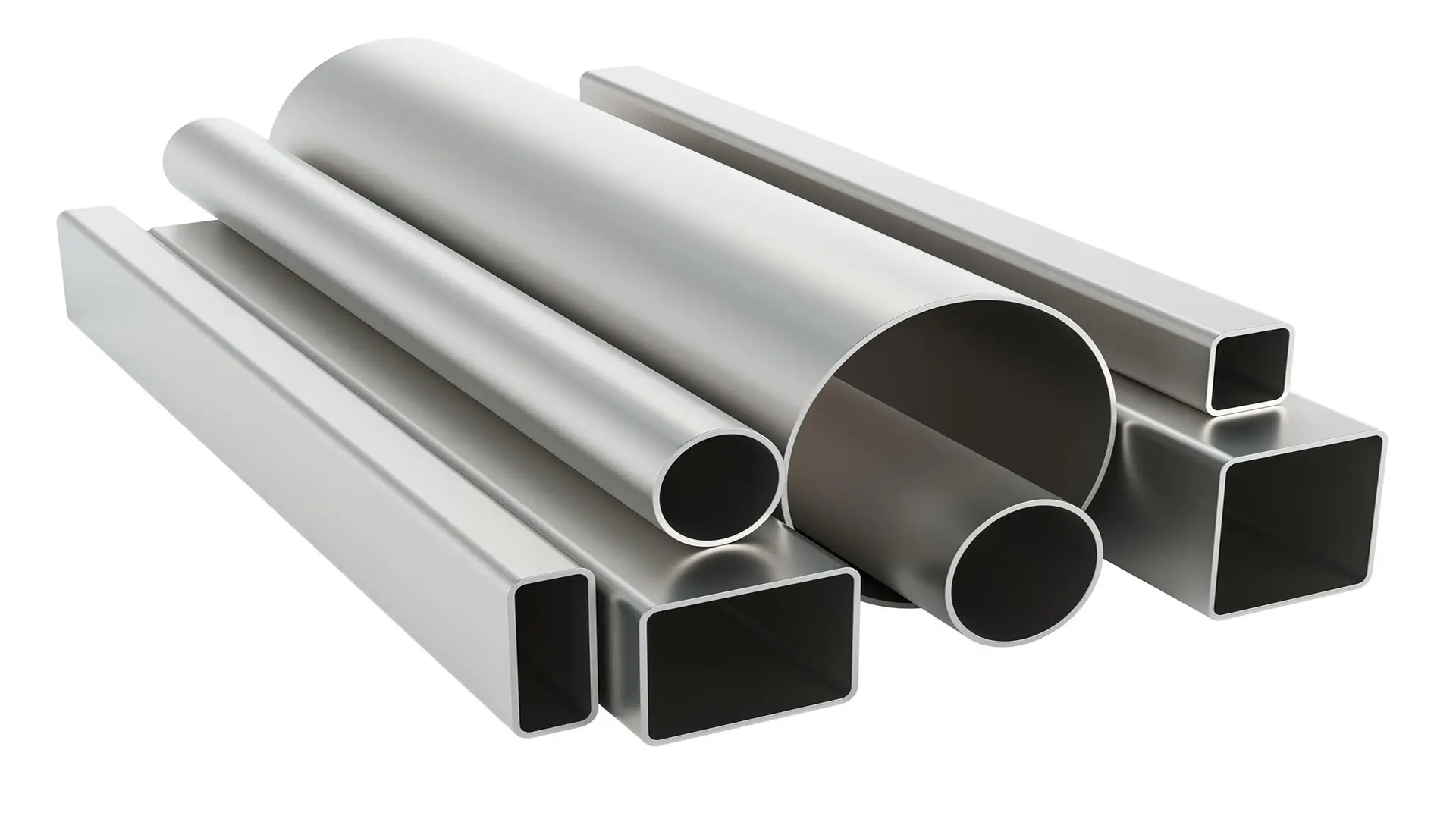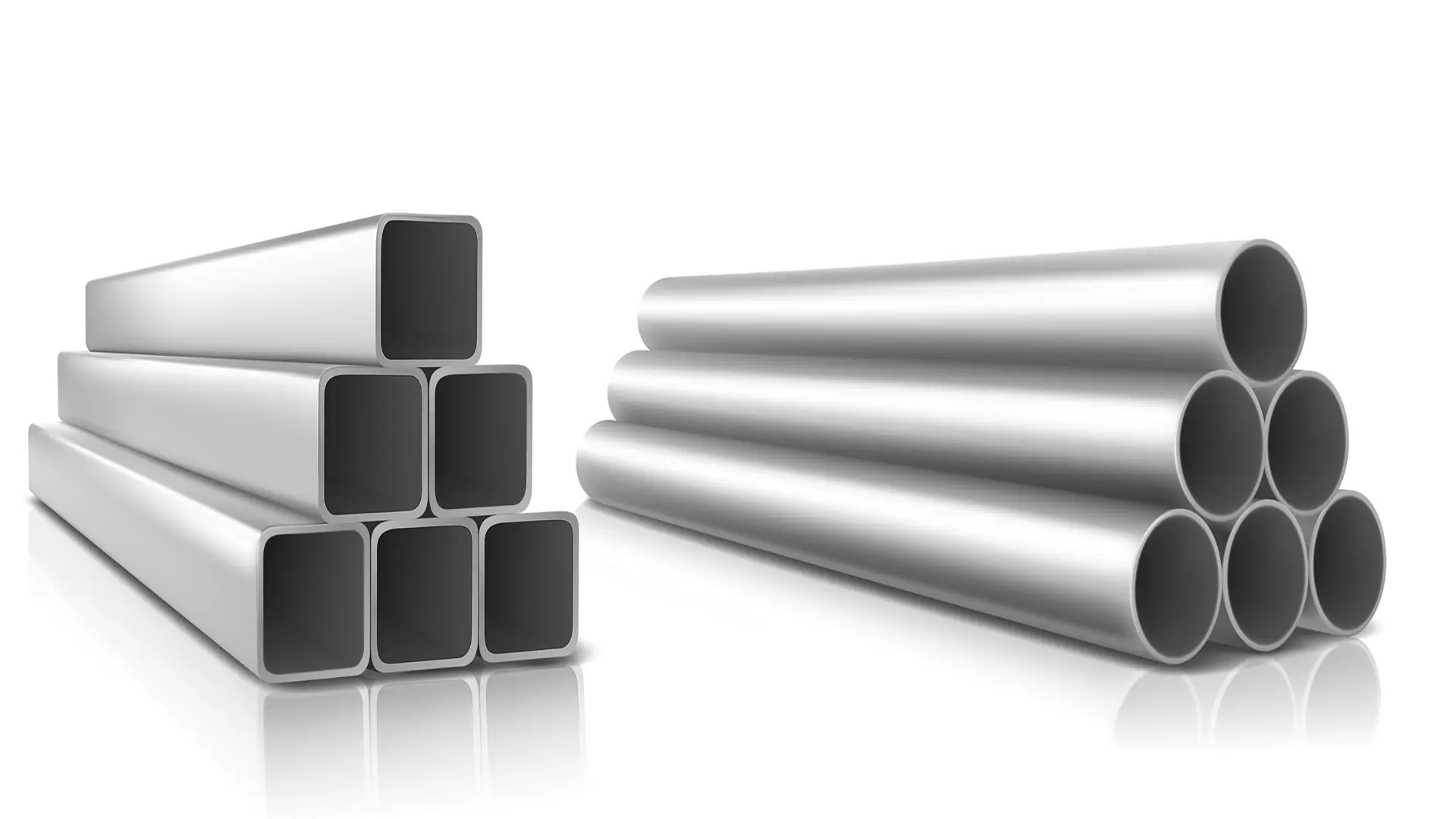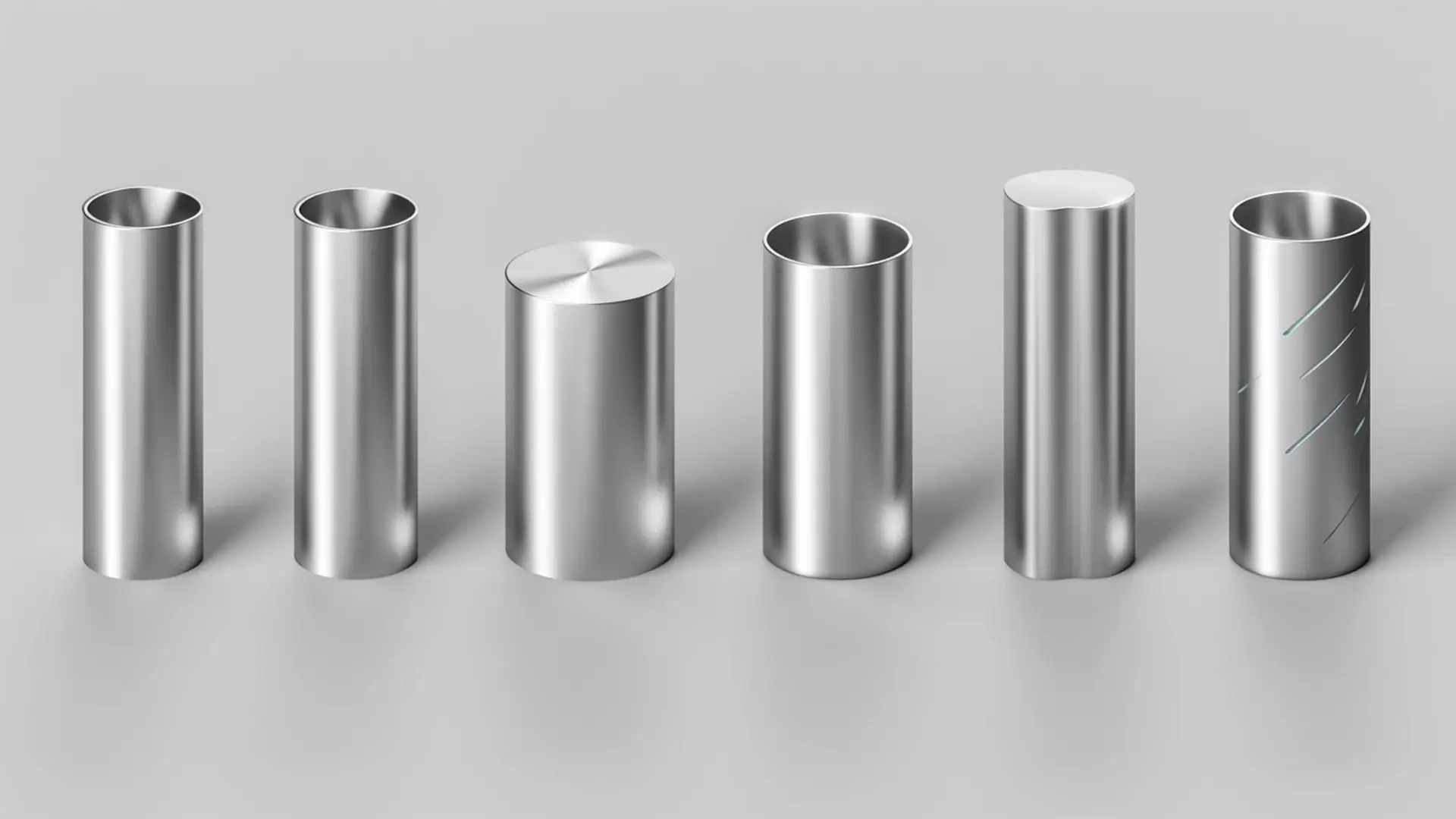
An aluminum tube profile is a type of hollow section produced in circular, oval, square, or rectangular shapes and is made from various aluminum alloys. These types of profiles fall into the category of industrial and construction profiles, and due to the unique properties of the aluminum metal, they are widely used in various industries.
Aluminum, due to its low weight, high corrosion resistance, excellent formability, recyclability, and suitable conductivity, is considered a suitable substitute for steel or copper in many applications.
Important Advantages and Features
Lightweight Aluminum is one of the lightest industrial metals, which is why the use of aluminum tubes is very common in structures where weight is important (such as airplanes, bicycles, cars, etc.). Resistance to corrosion and rust Aluminum profiles, especially if anodized, have very high resistance to moisture and chemicals. This feature makes them ideal for use in outdoor and humid environments. Easy formability and machinability Aluminum tubes can be easily bent, drilled, cut, and welded without significantly changing their mechanical properties. Aesthetic appearance and color variety Aluminum tube profiles can be given various colors and effects through different coatings such as anodizing, electrostatic powder, polishing, or brushing, which are used in modern designs. High thermal and electrical conductivity Aluminum conducts heat and electricity well, so its tubes are widely used in ventilation systems, radiators, electrical equipment, and heat transfer applications. Recyclable and environmentally friendly Aluminum is 100% recyclable without losing its quality, making it a suitable choice for green and sustainable projects.


Common Applications of Aluminum Tube Profile
Construction and Architecture Such as railings, window frames, lightweight structures, canopies, and partitions Automotive and Transportation Industries: Use in the body of lightweight vehicles, bicycles, boats, aircraft parts HVAC (Heating, Ventilation, and Air Conditioning) Equipment: Such as ducts, heat transfer systems, coolers Sports Equipment and Furniture: For manufacturing chairs, tables, lightweight and portable structures Electrical and Electronics Industries: As electrical conductors or components with heat transfer capability Exterior Facades and Interior Decoration: Use in modern designs with specific color schemes and coatings
Conclusion
Due to its simultaneous combination of lightness, durability, formability, and beauty, the aluminum tube profile is considered one of the most popular sections in various industries. Whether for industrial uses or for decorative and construction applications, this type of profile is an ideal, cost-effective, and long-term choice.
